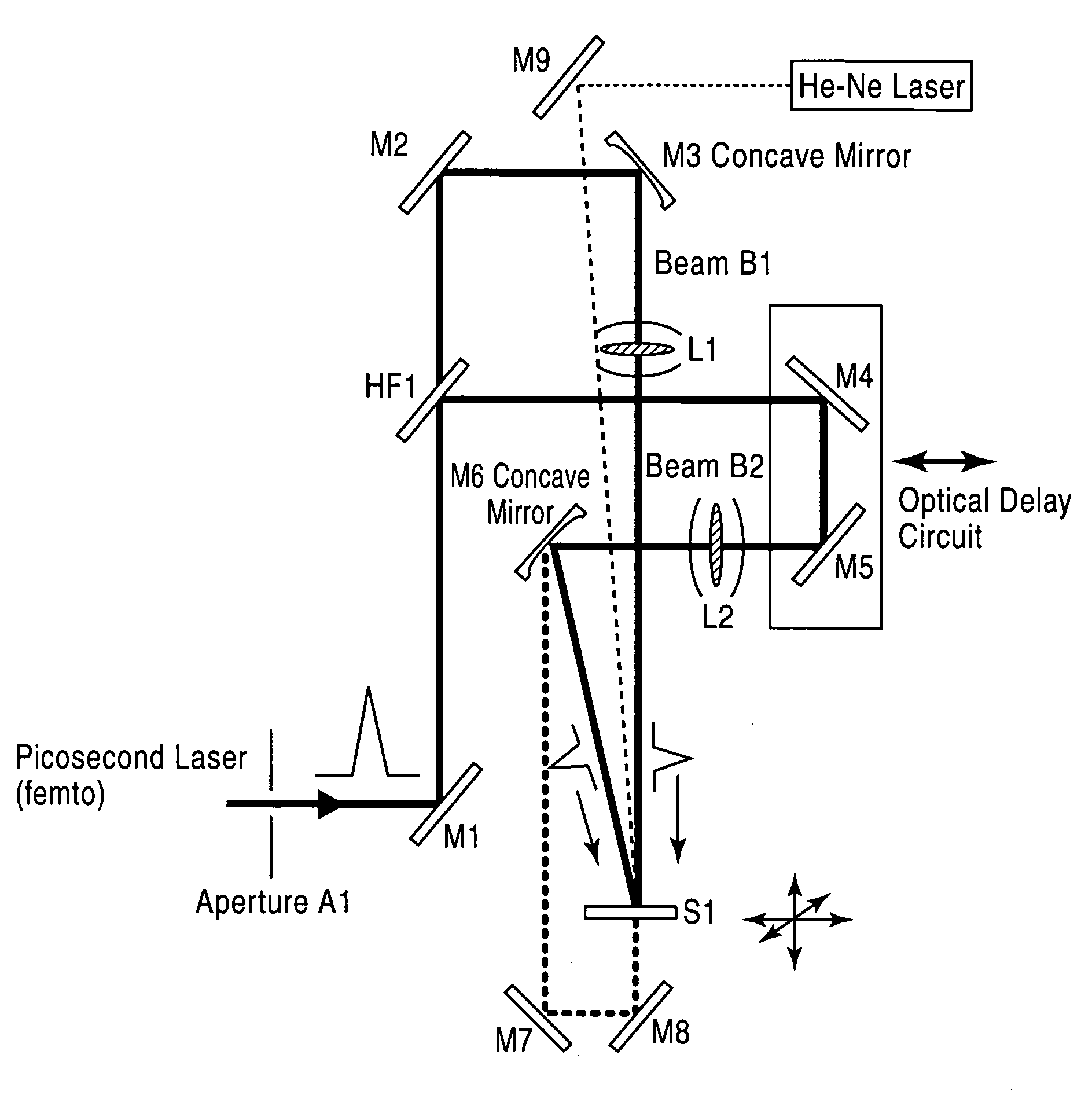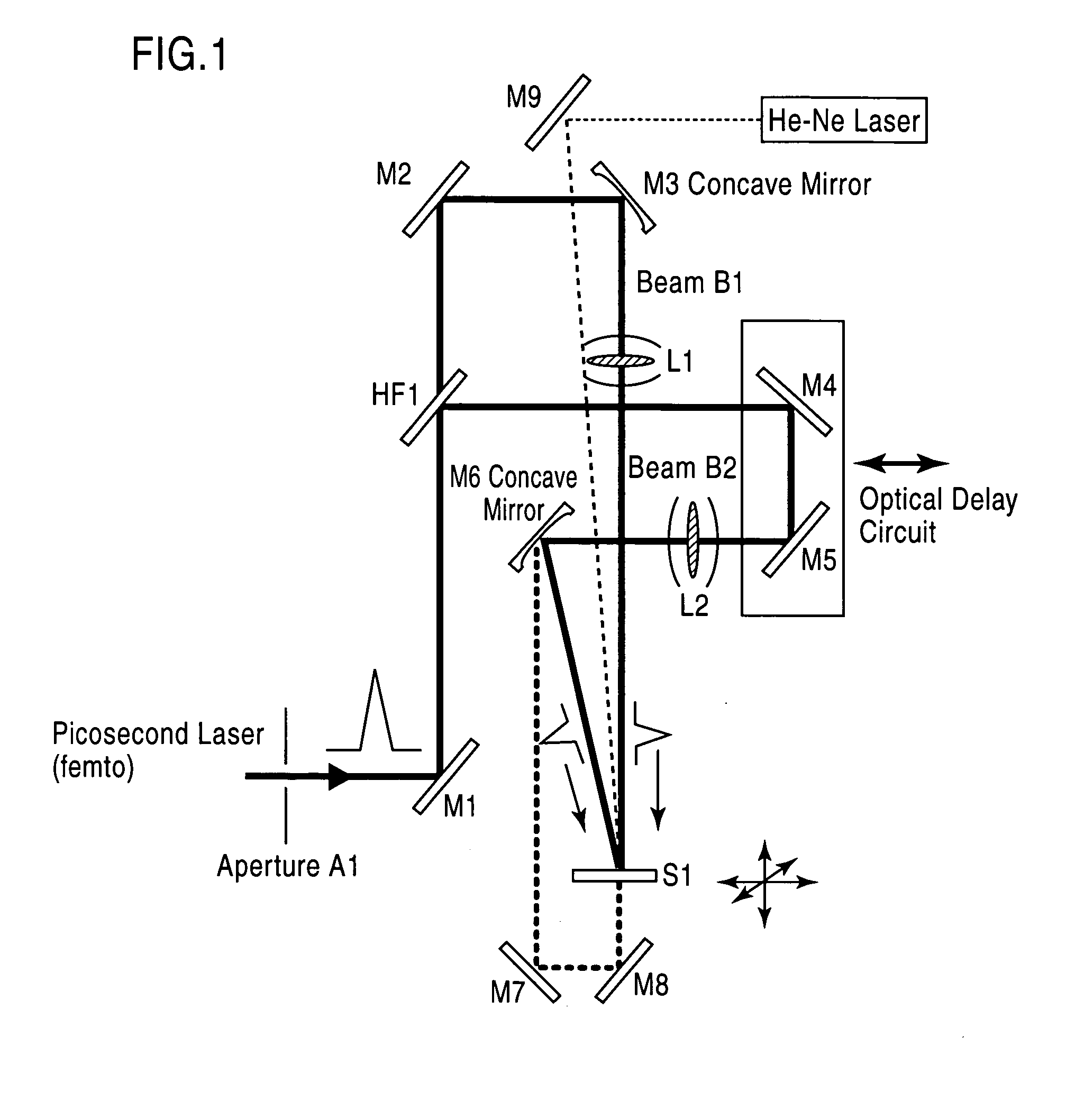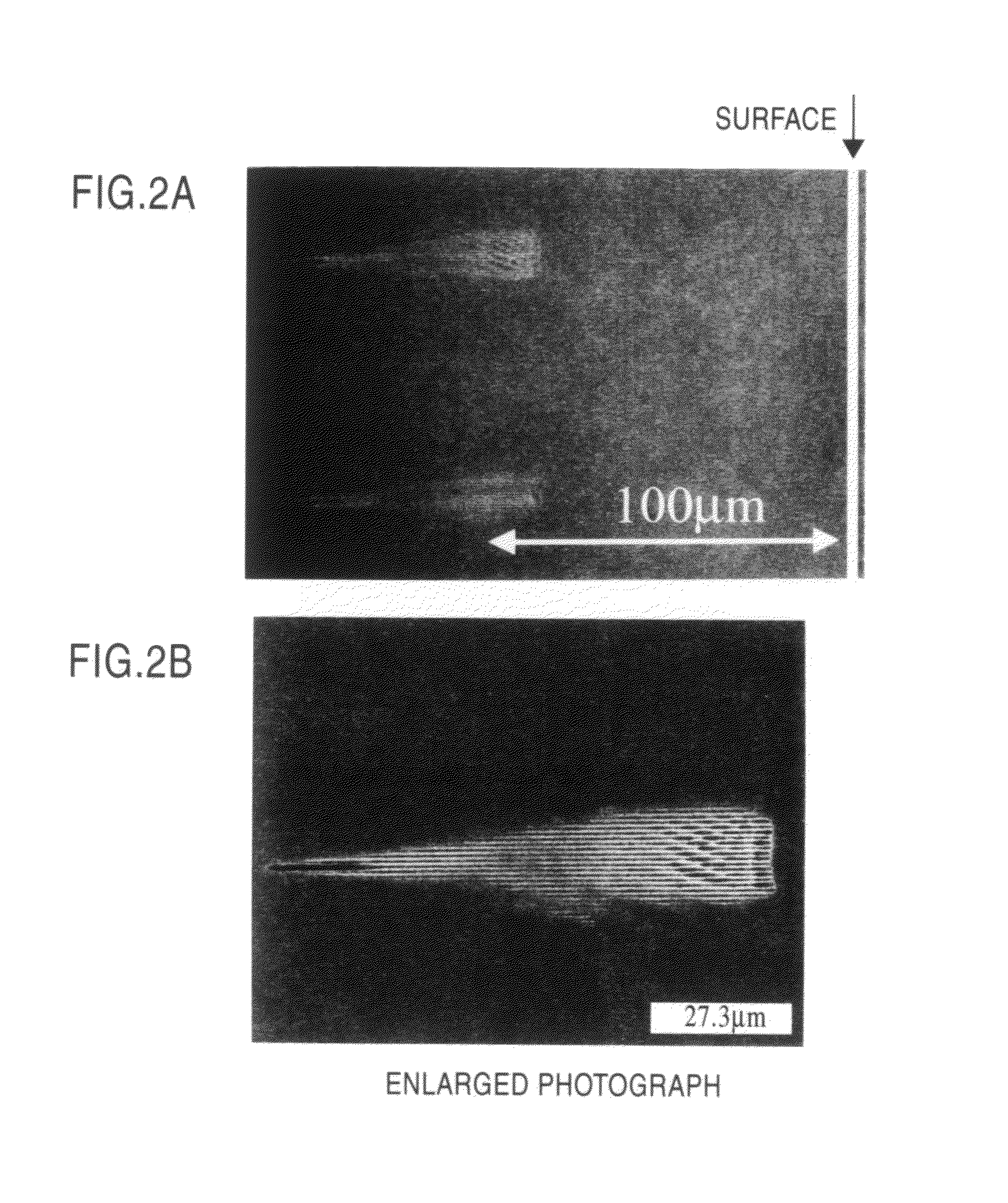Method for producing hologram by pico-second laser
a micro-hologram and laser technology, applied in the field of micro-hologram production, can solve the problems of difficult recording of embedded holograms, distortion of pulsed laser beam waveforms, etc., and achieve the effects of reducing waveform distortion, stably recording, and significantly reducing the generation of harmonics from air or non-linear optical crystals
- Summary
- Abstract
- Description
- Claims
- Application Information
AI Technical Summary
Benefits of technology
Problems solved by technology
Method used
Image
Examples
example 1
[0047]The two-beam laser interfering exposure apparatus illustrated in FIG. 1 was used. That is, a laser was the regenerative-amplifier titanium-sapphire laser for generating a pulsed laser light with an oscillation center frequency of about 800 nm, a pulse width τ of about 100 femtoseconds, and a pulse energy of 50 μJ / pulse for each of the two beams.
[0048]The pulsed laser light was divided into two beams by the half mirror HF1, and converged by the lens L1 and the lens L2. An optical delay circuit and an optical-path positioning circuit were interposed in one of the optical paths for the beam B1 and the beam B2, and the converged spots of the two beams were matched with one another temporally and spatially according to the intensity of a third harmonic generation wave induced by air. The size of the matched spot was about 100 μm, and the peak density was calculated as about 1 J / cm2. The incident angle of the beams B1 and B2 at the workpiece S1 was set at 45-degree.
[0049]Then, a pul...
example 2
[0052]The two-beam laser interfering exposure apparatus illustrated in FIG. 1 was used. That is, a laser was the regenerative-amplifier titanium-sapphire laser for generating a pulsed laser light with an oscillation center frequency of about 800 nm, a pulse width τ of about 100 femtoseconds, and a pulse energy of 50 μJ / pulse for each of the two beams. The pulsed laser light was divided into two beams by the half mirror HF1, and converged by the lens L1 and the lens L2. An optical delay circuit and an optical-path positioning circuit were interposed in one of the optical paths for the beam B1 and the beam B2, and the converged spots of the two beams were matched with one another temporally and spatially according to the intensity of the third harmonic generation wave induced by air.
[0053]The size of the matched spot was about 100 μm, and the peak density was calculated as about 1 J / cm2. The incident angle of the beams B1 and B2 at the workpiece was set at 45-degree. Then, a pulse-wid...
example 3
[0055]The two-beam laser interfering exposure apparatus illustrated in FIG. 1 was used. That is, a laser was the regenerative-amplifier titanium-sapphire laser for generating a pulsed laser light with an oscillation center frequency of about 800 nm, a pulse width τ of about 100 femtoseconds, and a pulse energy of 50 μJ / pulse for each of the two beams.
[0056]The pulsed laser light was divided into two beams by the half mirror HF1, and converged by the lens L1 and the lens L2. An optical delay circuit and an optical-path positioning circuit were interposed in one of the optical paths for the beam B1 and the beam B2, and the converged spots of the two beams were matched with one another temporally and spatially according to the intensity of the third harmonic generation wave induced by air. The size of the matched spot was about 100 μm, and the peak density was calculated as about 1 J / cm2.
[0057]The incident angle of the beams B1 and B2 at the workpiece was set at 45-degree. Then, a puls...
PUM
 Login to View More
Login to View More Abstract
Description
Claims
Application Information
 Login to View More
Login to View More - R&D
- Intellectual Property
- Life Sciences
- Materials
- Tech Scout
- Unparalleled Data Quality
- Higher Quality Content
- 60% Fewer Hallucinations
Browse by: Latest US Patents, China's latest patents, Technical Efficacy Thesaurus, Application Domain, Technology Topic, Popular Technical Reports.
© 2025 PatSnap. All rights reserved.Legal|Privacy policy|Modern Slavery Act Transparency Statement|Sitemap|About US| Contact US: help@patsnap.com



